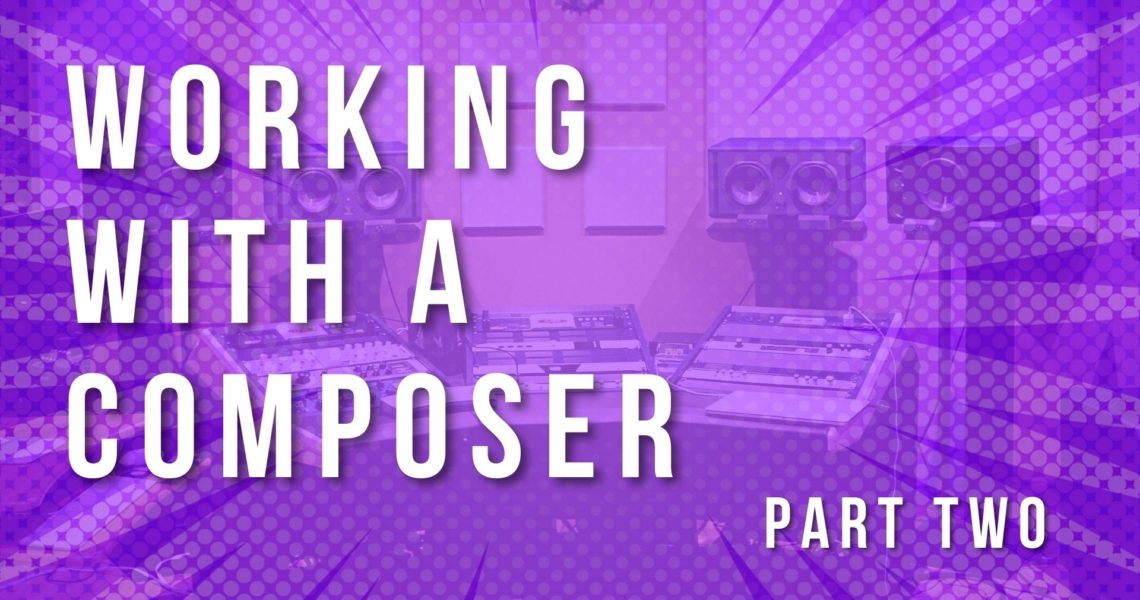So you’ve found a friend who writes music (maybe through ATX Gamemakers), and you’re excited to get started. You’ve read part 1 of this article, and you’re off to a great start, but what’s next? Lots more talking, I’m afraid. Good thing y’all like each other!
Deliverables
Discuss, as precisely as you can, what they will deliver! Is your composer uploading .wav files to a dropbox? Are you hoping for a Wwise or FMOD file that they will continually update? Do they have the skills to fully integrate their soundtrack into your game engine? Figure out how far along the path they are meeting you.
Knowing Your Budget and Ensembles
If you haven’t already, sharpen the scope of the soundtrack as much as possible before getting too much of the soundtrack written. Your composer should help you answer questions like: Which tracks will need live instruments? Who will play for these parts, and how much will the sessions cost? Are all of the songs going out to a professional mixer? Where are you using multiple layers on a track?
Later, we’ll talk about one way to keep all of this information organized – the cue sheet!
Moving from Suite to Soundtrack
We talked in part 1 about commissioning a suite for your game. If this makes sense for your project, you now have 5 minutes of music that can serve as the starter for different areas of your game. The calm parts of your suite can become the menu music; the bolder parts could become your action music.
After a close listening, chat with your composer about what parts of the suite suit different parts of your game. Chat about what might still be missing. Maybe the suite will only serve as the game’s main theme, but the instrumentation will serve all of your environments. Maybe one tiny sound becomes the inspiration for a whole area. Now is the time to dig in.
Get a list of cues going and put them in an order that makes sense for your team. If you have the time, prioritize the tracks that will be the most influential on the soundtrack as a whole, rather than the most urgent.
The sooner your composer knows if something important is working, the easier it will be to knock out tracks in the future, which brings us to…
Giving Feedback
First: DON’T WORRY – YOU KNOW HOW TO NOT BE A JERK!
I’ve heard more than once that people are worried about giving feedback. Developers can worry about hurting feelings when asking for changes, particularly with something that feels as “soul-bearing” as music. Truthfully, though, a professional composer will separate their ego from their work and welcome your input. And, the sooner we hear your thoughts, the better. There’s not much worse than having to scrap a nearly-finished soundtrack because a client didn’t express their worry earlier in the process. As a general rule, critique fit, rather than quality, and you’ll avoid hurt feelings.
Here is a short selection of the suite for the upcoming “Fairway Evil:”
Below the suite is broken into parts to give you some isolation to consider. Think about these elements when giving feedback and brainstorming new music. If you want to dive in even further, consider signing up for a Music Appreciation program at your local college, or spend a little time on youtube. 8-Bit Music Theory’s channel can be a little heady for non-musicians, but is still well worth the watch.
Getting Organized with a Cue Sheet
To keep all of this straight, pros use a cue sheet. If there are any composers reading, take note, you need a way to keep all of this stuff organized. There are lots of ways to get set up, but the cue sheet is going to be your one-stop-shop for notes, iterations, planning, and tracking. Let’s go section by section:
Cue: This is the name of a cue; consider listing by area and then title to keep organized
Type: list if this cue is a one-shot, loop, or stinger
Add ons: list here if the cue will require session musicians, mixers, or multiple layers
References: keep a list of song references and notes on those sections; link them!
Status: Keep track of where each cue is in the process of finishing them
Notes: put feedback and important changes here
Other things to track: version numbers, track length, budget per track, etc.
You can copy/edit this cue sheet to make your own here.
Recording and Mixing
One important thought about the last phase of the music itself: make sure mockups are approved and you are happy before recording session musicians and getting a final mix. The scoring stage and mix room is the place to polish everything up, rather than still be sculpting.
Happy developing!
Trevor Whitaker Black began his career at Hans Zimmer’s studios in Santa Monica, and since then has worked on games for Sony, tinyBuild, and Somatone Interactive. He is currently writing for two games being developed in Austin, and he releases a weekly podcast about Faith in the Entertainment industry called The Playing God-cast.

